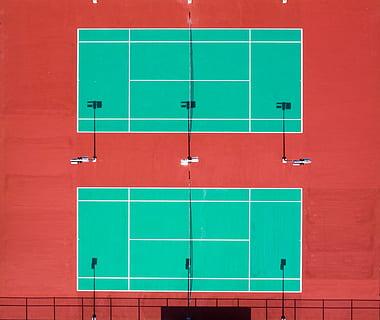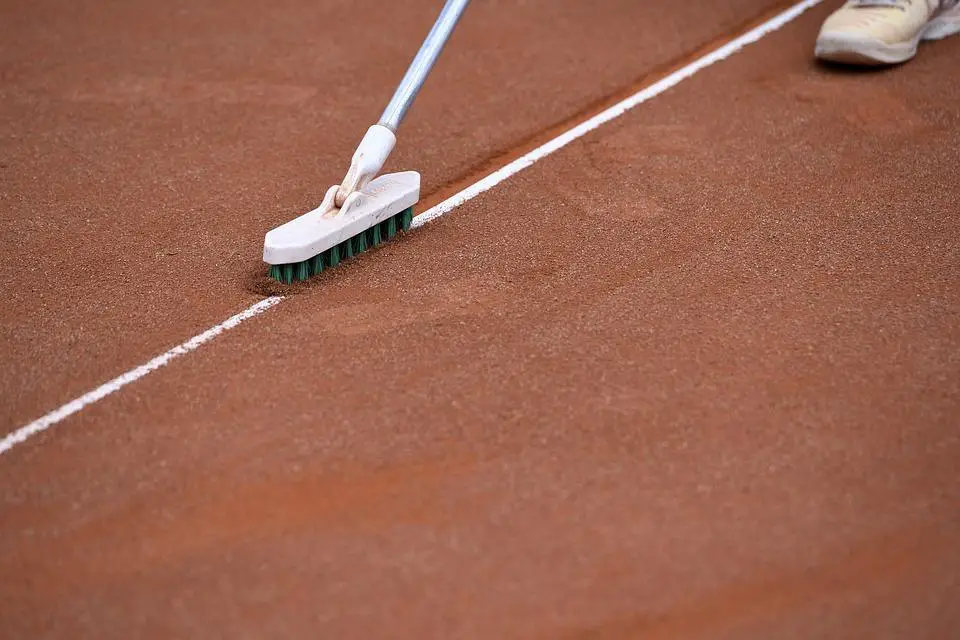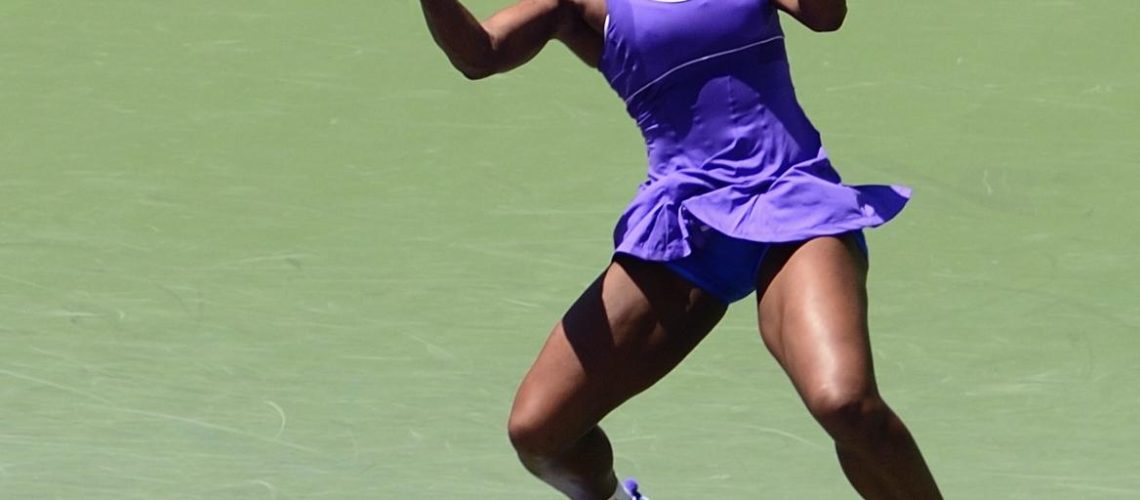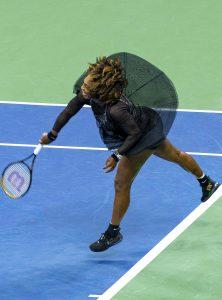We may earn money or products from the companies mentioned in this post.
Introduction

A Brief History of Tennis Court Lines and Their Evolution
When you step onto a tennis court, you may not give much thought to the lines that adorn its surface However, these lines have a rich history and have evolved over time to become essential elements of the game The origins of tennis can be traced back to 12th-century France, where it was played by monks who used their hands instead of rackets As the game gained popularity and spread across Europe, players started using wooden rackets and began marking boundaries on the court
In the early days of tennis, the court lines were simple and served as basic markers for gameplay Over time, as rules were standardized and competitive play became more structured, the need for clear boundary lines became paramount The familiar white lines that we see on tennis courts today emerged in the late 19th century as a way to clearly define the playing area
Tennis court lines have undergone further refinements in recent years with advancements in technology Modern courts now feature colored lines for improved visibility, especially on televised matches Additionally, electronic line-calling systems have been introduced in some tournaments to provide accurate rulings on close line calls
The Importance of Understanding Tennis Court Lines for Players and Spectators
Understanding tennis court lines is crucial for both players and spectators alike For players, knowing the boundaries allows them to make accurate shots within the confines of the court Each line serves a specific purpose – from determining whether a ball is in or out to guiding players during serves and volleys
For spectators watching a match, understanding tennis court lines adds another layer of engagement and appreciation for the sport It enables them to follow rallies more closely by discerning whether shots land inside or outside the playing area The different lines also provide visual cues for the tactics and strategies employed by players, helping spectators analyze their performance
Furthermore, being familiar with tennis court lines fosters a deeper understanding of the game’s rules and regulations It allows spectators to participate in discussions about close calls, line challenges, and the overall dynamics of a match
In conclusion, tennis court lines have come a long way from simple markers to integral components of the game Whether you’re a player striving for precision or a spectator seeking to appreciate the intricacies of tennis, understanding these lines is vital So next time you step onto a tennis court or settle in to watch a match, take a moment to appreciate the significance of those white lines that define the boundaries of play
Basic Tennis Court Layout and Line Markings
Tennis, a popular sport played all over the world, requires a specific court layout and precise line markings Understanding these elements is crucial for both players and spectators In this article, we will explore the basic tennis court layout and discuss the different types of courts, standard dimensions for singles and doubles matches, as well as the primary lines on a tennis court
Different Types of Courts
Tennis can be played on various surfaces, each with its own characteristics that significantly impact gameplay and line visibility The three main types of courts are grass, clay, and hard courts
Grass courts offer fast-paced games due to their low bounce They require players to adapt quickly to the unpredictable ball movement caused by uneven patches of grass Line visibility can sometimes be challenging on grass courts due to their color contrast with the white lines
Clay courts provide slower gameplay compared to grass or hard courts The soft surface offers more bounce but reduces overall speed Clay also allows players to slide into shots more easily On clay courts, line visibility is generally better because the red-colored clay contrasts well with the white lines
Hard courts are made of asphalt or concrete covered with an acrylic layer They offer a medium-paced game with consistent ball bounce Hard court surfaces come in different speeds depending on their texture and coating materials used Line visibility is typically good on hard courts due to their solid surface
Standard Dimensions for Singles and Doubles Courts
To ensure fair play and consistency across different tennis matches, there are standard dimensions for both singles and doubles courts:
- The length of a singles court is 78 feet (2377 meters), while a doubles court measures 78 feet (2377 meters) in length and 36 feet (1097 meters) in width
- Service boxes are located on both sides of the court, measuring 21 feet (64 meters) in length and extending from the baseline to a distance of 12 feet (366 meters).
- The alleys, also known as doubles sidelines, run parallel to the singles sideline and extend from the service line to the outermost edge of the court
Identifying Primary Lines on a Tennis Court
Now let’s take a closer look at the primary lines on a tennis court that are essential for gameplay:
-
Baselines:
The baselines mark the ends of the court and determine its length There are two types of baselines: singles baseline, which is used for singles matches, and doubles baseline, which is used for doubles matches - Singles Baseline: Located at each end of a singles court, this line serves as a reference point for serving and returning shots during singles matches
- Doubles Baseline: Positioned further back than the singles baseline, this line defines the boundary for serving and receiving in doubles matches
-
Sidelines:
The sidelines run parallel to each other along the length of the court, defining its width - Singles Sideline: These lines mark the inner edges of a singles court and help determine whether shots land inside or outside of bounds
- Doubles Sideline: Situated further out than the singles sideline, these lines establish boundaries for shots in doubles matches
-
Center Mark:
The center mark is located at the middle of the baseline and serves as a reference point for positioning during serves -
Service Line:
Positioned parallel to the net, the service line separates the baseline from the service boxes - Inner Service Box: Situated between the net and the service line, this box determines where players must stand when serving
- Outer Service Box: Located between the inner service box and the baselines, this box defines where serves need to land to be considered in play
In conclusion, understanding basic tennis court layout and line markings is essential for both players and fans The type of court greatly affects gameplay, while standard dimensions ensure fairness in matches Familiarizing yourself with these primary lines helps you understand how shots are determined in or out of bounds So next time you step onto a tennis court, take note of these elements that make up this beloved sport’s playing field!
Detailed explanation of each line’s significance in game rules & scoring

Baselines
The baselines in tennis play a crucial role in defining the boundaries at the back end of the court They mark the outermost lines that determine whether a shot is considered “in” or “out” When a player hits a ball, it must land within these baselines to be considered a valid shot If the ball lands beyond the baseline, it is considered out of bounds and results in an unfavorable outcome for the player
Sidelines
In tennis, there are different sidelines for singles and doubles matches The singles sidelines are narrower compared to doubles, allowing less room for shots to land in play This difference has significant implications on gameplay and scoring Players strategically adapt their tactics based on their opponents’ strengths and weaknesses For example, if an opponent has a weaker backhand, targeting that side of the court by aiming closer to the sideline can put them under pressure and create advantageous opportunities
Center Mark
The center mark plays an important role during serving It helps players determine whether they should serve from the right or left side of their respective service box By aligning themselves with this mark, players ensure they have proper positioning while serving from either side of the court
Service Lines
The service lines define boundaries within which serves must land to be considered valid A serve landing outside these lines is deemed out of bounds and results in a fault or loss of point for the server However, if the serve clips any part of these service lines before going out, it is still considered valid In some cases where there is uncertainty about whether a serve landed inside or outside these lines, players may call for a let (a re-do) or accept a fault call, depending on the situation
Tennis Court Line Etiquette & Maintenance

Proper etiquette when disputing calls involving lines (eg, asking an umpire/referee)
When it comes to questioning line calls in tennis, it’s important to maintain proper etiquette Remember, the umpire or referee is there to ensure fair play and make accurate judgments Instead of losing your cool and making a scene, approach them respectfully and calmly express your concern Politely ask for clarification on the call, but always accept their final decision with grace By adhering to this etiquette, you not only demonstrate good sportsmanship but also contribute to a positive playing environment
Common techniques for maintaining visible lines on different court surfaces
Tennis courts come in various surfaces, each requiring specific maintenance techniques to keep the lines clearly visible On clay courts, regular sweeping helps remove debris and dust that may obscure the lines Watering the court prior to play also helps settle the clay particles and enhances visibility Rolling the court aids in compacting the clay and ensuring smoothness
Grass courts demand meticulous care for vibrant lines Regular mowing keeps the grass at an ideal height so that lines are easily distinguishable Re-seeding bare patches promotes healthy growth while fertilizing nourishes the grass, maintaining its lush green appearance
Hard courts necessitate regular repainting of lines as they tend to fade over time due to wear and tear Additionally, routine cleaning with appropriate materials ensures that dirt or stains do not obstruct line visibility
The role of line judges & electronic systems in professional matches to ensure accurate calls
In professional tennis matches, line judges play a crucial role in ensuring accurate calls along the boundaries of the court Positioned strategically around the perimeter, they observe each shot closely and make instantaneous judgments Their expertise and impartiality provide a reliable source of decision-making
Alongside line judges, electronic systems have also become prevalent in professional matches These advanced technologies, such as Hawk-Eye, use cameras to track the trajectory of the ball with incredible precision They provide visual evidence and assist in overruling any disputed calls, leaving no room for doubt
By covering these sections in depth, this blog aims to provide a comprehensive understanding of tennis court lines and their significance in the game Whether it’s about navigating line disputes or maintaining optimal conditions for play, this article will equip readers with valuable insights while engaging them through an informative and conversational style
Useful Links

Rules of Tennis | Wanless Park Tennis
What is the name of the white line on a tennis court?
Boundary. Meaning in tennis. Definition. Wiki. Terms
Tennis Court Dimensions & Size
What do the different lines on a tennis court mean? – Racket Source
Tennis Rules
The Basics of Tennis | Tennis 101 | Tennis Rules
Courts, Nets and Lines | 10-And-Under Tennis Rules
Temporary Pickleball Court Setup
General Information – Capital Area Tennis Association
Tennis Rules | Official Rules of Tennis
What do those lines mean? – Courts, racquets and fuzzy balls
Non-Competing Lines on the same court
Tennis Court Explained with Diagram Labeled …
Tennis Court Lines Geniala white – e-sportshop.cz
Tennis scoring explained
What Do Tennis Court Lines Mean? Unraveling the Mystery
Roll-Down Lines
Tennis Court FAQs






